The Gershwin family lived in over 20 different apartments while the children were growing up because Morris liked to live near wherever he was working and he kept changing his profession. After working in the shoe industry, he worked in a cigar store, a pool parlour, a bakery, a restaurant, Turkish and Russian baths and for three weeks only, he was a bookmaker at Brighton Beach. Their oldest son, Ira, was born on the lower east side of Manhattan, over Simpsons Pawn Shop at 60 Eldridge Street at the junction of Hester Street.
This is now a Chinese neighbourhood but at the turn of the 20th century, it was home to all the Jewish immigrants who had escaped to America from Eastern Europe.
Many thanks to Glen Norman for these photos of the plaque.
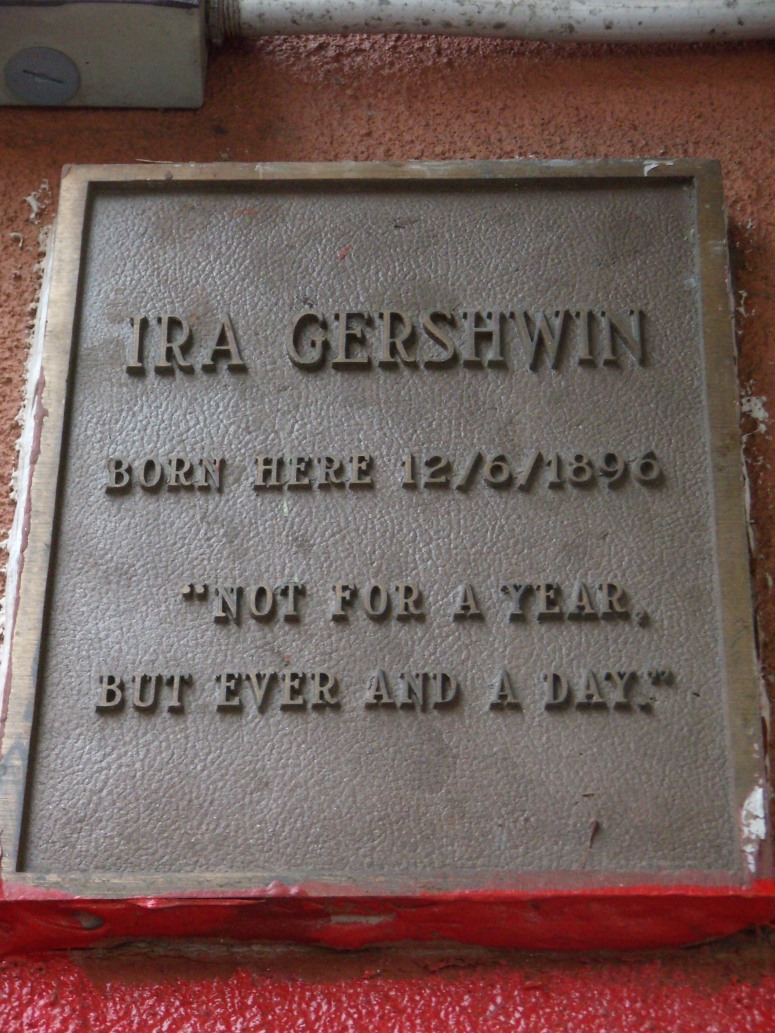
This plaque was donated by Leonore Gershwin.

I came across a very old synagogue in Rivington Street and this is just around the corner from the Tenement Museum in Orchard Street.
242 SNEDICKER AVENUE
George Gershwin was born in a two-storey house in Snedicker Avenue in Brooklyn in 1898. It was surrounded by trees and opposite a synagogue in this quiet Jewish neighbourhood. There were just four in the family then, George’s parents, Rose and Morris and his older brother, Ira. They also had a maid as Morris was doing well at the time, designing uppers for women’s shoes.
In Michael Feinstein’s book, “The Gershwins and Me”, there is a lovely photo of George’s younger brother Arthur and sister Frances unveiling a plaque at this house in 1963, but I had also read that it didn’t exist there any more, so I was keen to go and see for myself.
I took the L train to Sutter Avenue in Brooklyn, turned left into Snedicker which looked like an industrial estate. There was a massive warehouse where I think 242 must have been, and loads of corrugated iron fencing.
Opposite was a brick building which at a first glance seemed to be a Spanish church. As I walked back on that side, I saw a star of David on the door.
It wasn’t until I was standing on the subway platform waiting to go back to Manhattan when I saw the brick star of David on the wall and realised that this must be the synagogue opposite the Gershwin’s house.
Having googled it, I found out that it was built in 1935 (obviously not the building that the Gershwins would have known) and is now a Spanish Church called La Sinagoga Juan at 247 Snediker Avenue.
425 3rd Avenue
The Gershwins lived here in 1899.
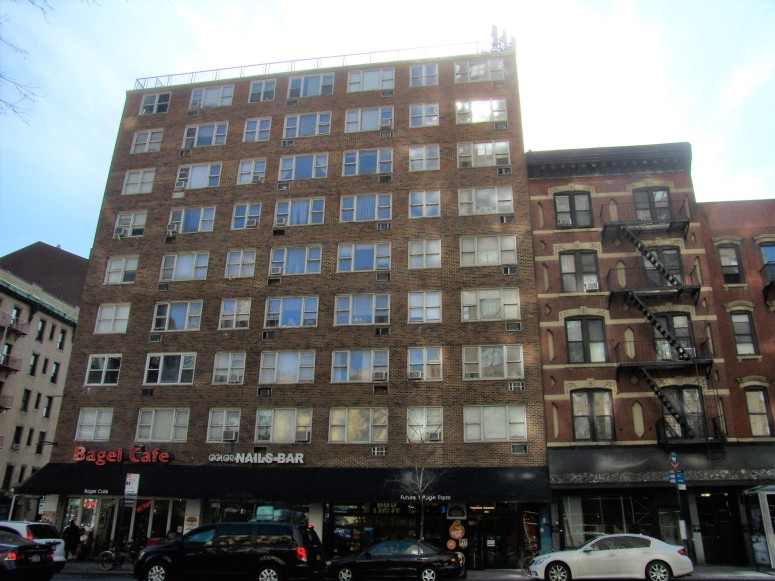
This is now a new building but I imagine it would have looked like the building on the right.
21 2nd Avenue
Arthur was born at this address in March 1900.
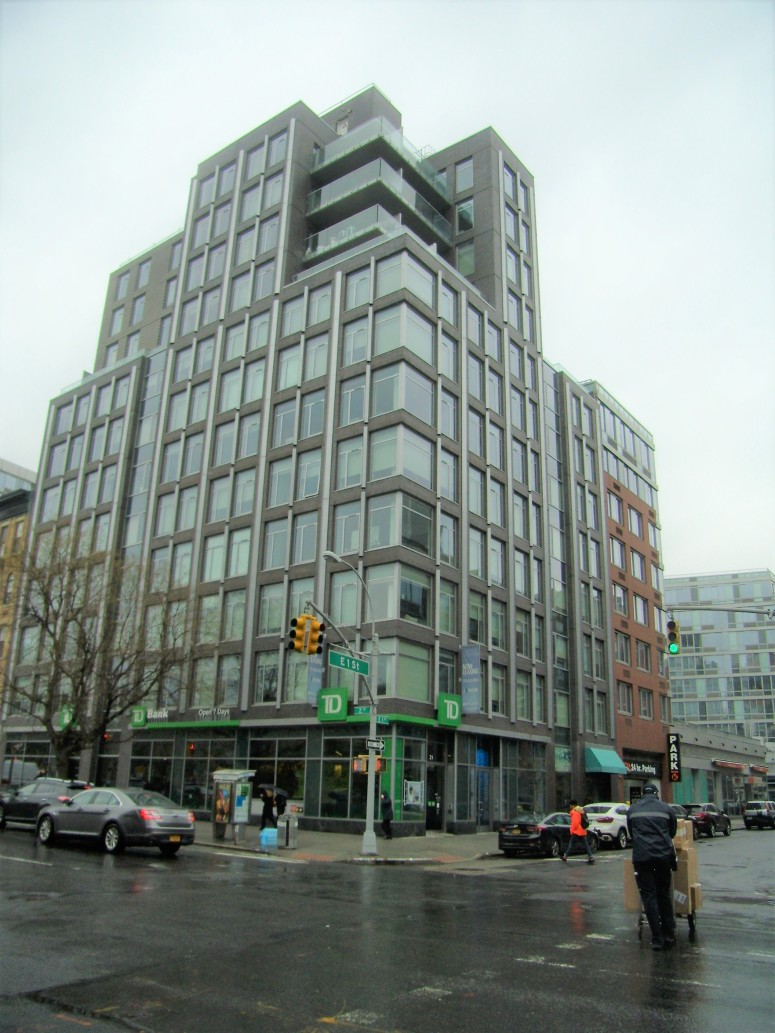
1310 8th Avenue
This was the Gershwins’ home in June 1900 in the quiet Brooklyn area of brownstone apartment buildings which is Park Slope.
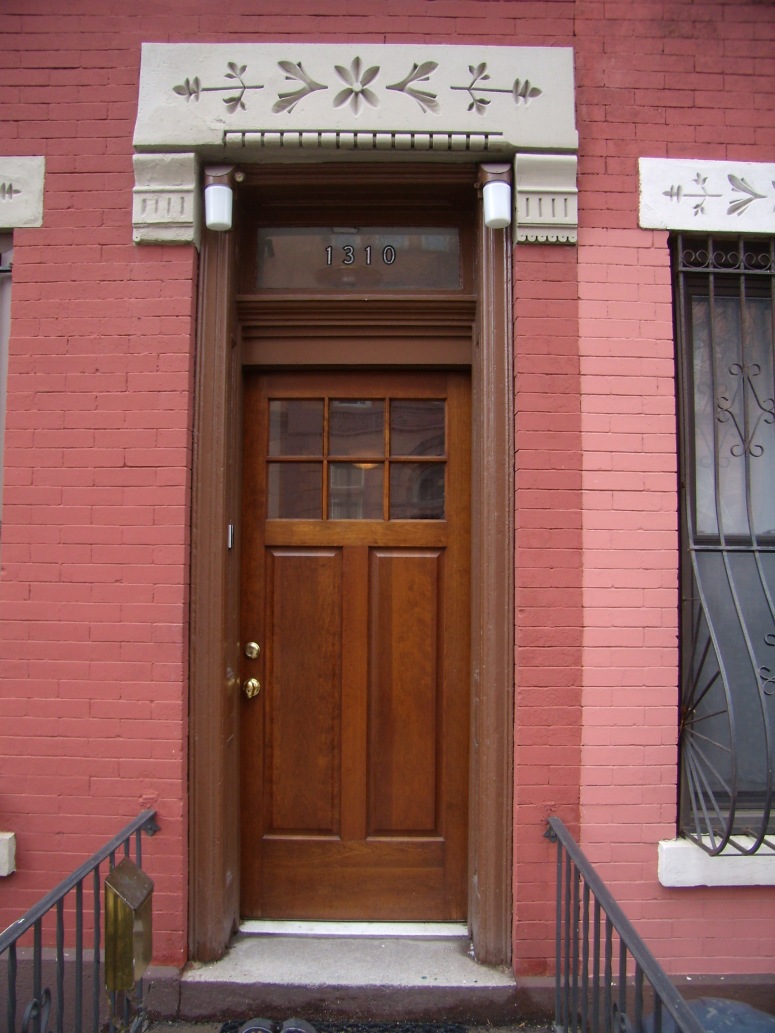
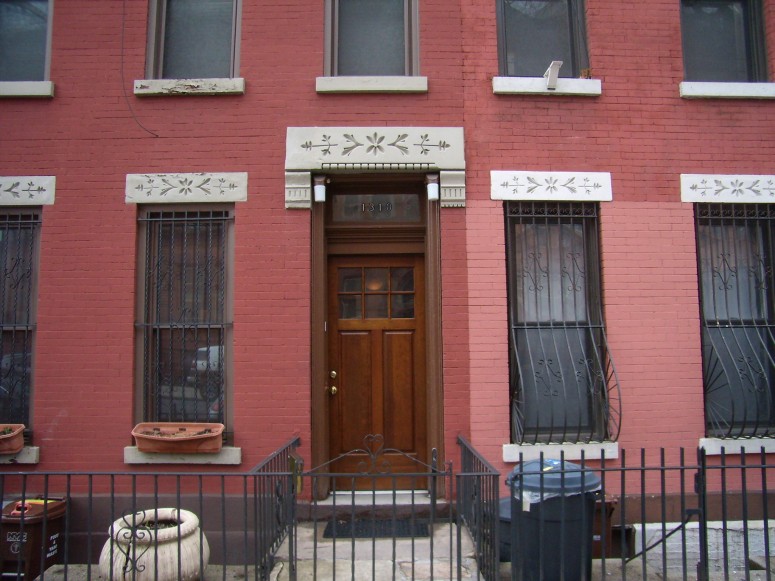
302 East Houston Street
This is on the north side of East Houston Street on the corner of Avenue B.
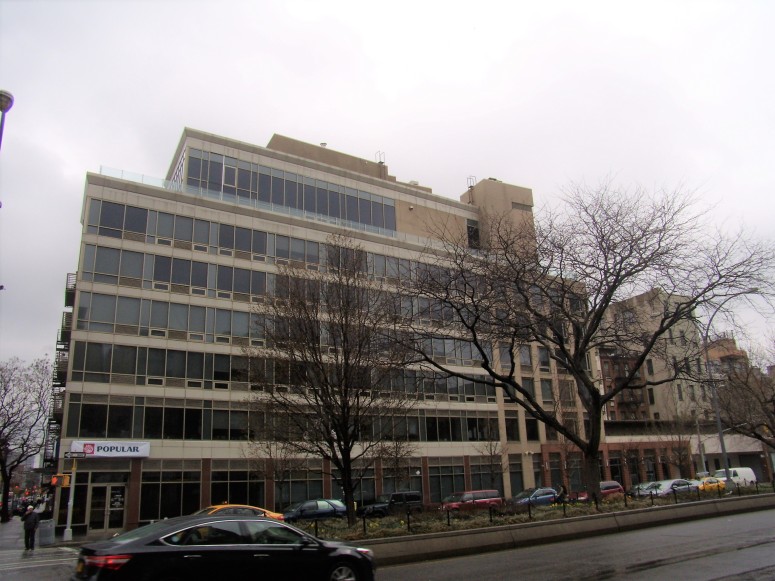
91 Second Avenue
The Gershwins lived here in a second story apartment on the busy Second Avenue above Saul Birn’s Phonogaph Shop. George was about 12 when the family was finally able to afford a piano and it was hoisted through the window of the front room. To everyone’s surprise, George immediately sat down and played one of the popular tunes of the day as he’d been playing a piano at the home of a friend on 7th Street.
Today, 91 Second Avenue looks like this. It’s between 5th and 6th Streets so his friend on 7th Street was just a few minutes walk away.
According to the Howard Pollack biography, the Birns brothers opened their phonograph shop at 77 Second Avenue late in 1909.
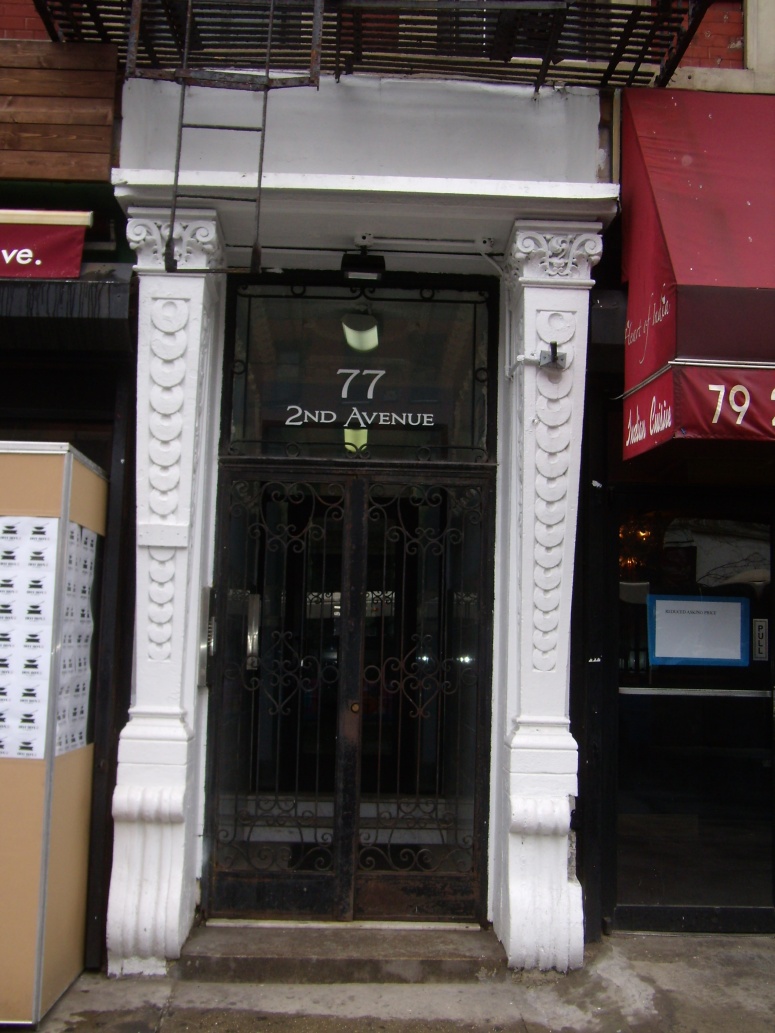

253 Grand Street
The Gershwins lived here in 1910.

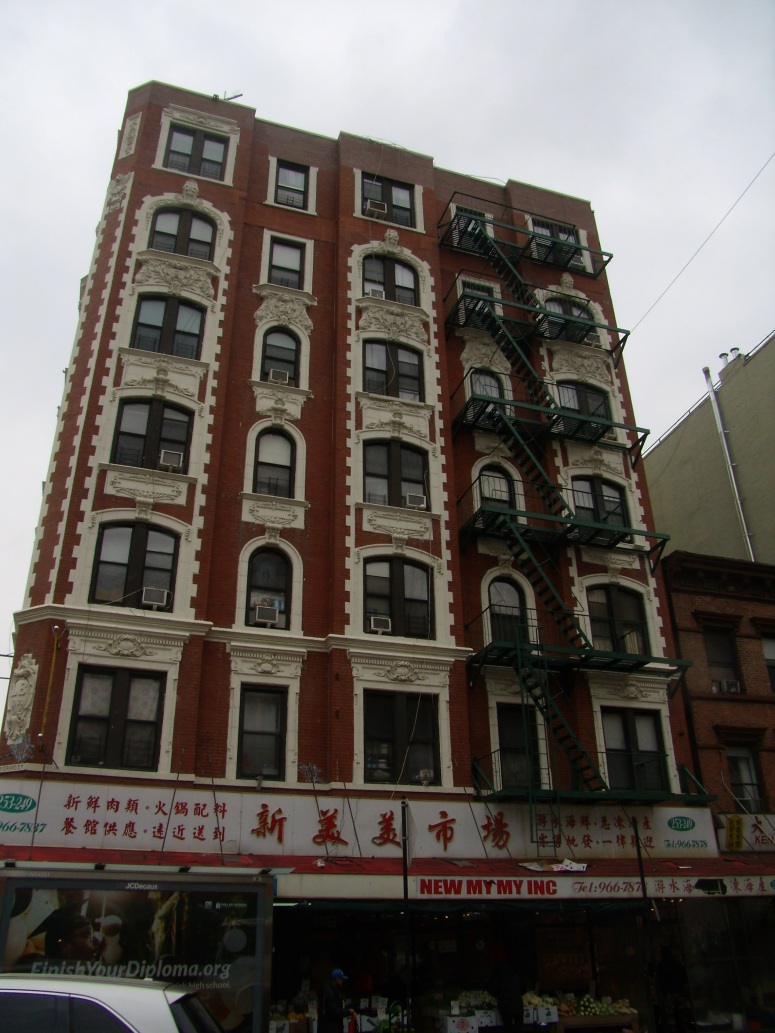
108 West 111th Street
In February 1915, the Gershwins were living much further uptown on 111th Street. They lived here when Morris was the proprietor of the St Nicholas Baths on 111th and Lenox Avenue.
Today, there is a tower block where 108 used to be but I really like the building at 110 which is called West Wing.
520 West 144th Street
In 1919, the Gershwin family were living even further uptown on 144th Street. It was here where George returned with his friend, Irving Caesar after having the idea to write a popular song in the style of the current hit, Hindustan. They had been having dinner in Times Square, then they took the bus (about 100 blocks) and after arriving home, finished the song, Swanee in about 15 minutes. Morris came in from his poker game in the room next door and joined in, playing his comb wrapped in tissue paper.
This is 144th Street between Broadway and Amsterdam Avenue.
501 West 110th Street
In 1925, the Gershwins were living on 110th Street, also called Cathedral Parkway, just round the corner from the Cathedral of St John The Divine.
This is the apartment where George wrote the Rhapsody in Blue. He was now enjoying the success that Swanee had brought him and had written songs for several musicals and made the cover of Time magazine.
Ferde Grofe of the Paul Whiteman Orchestra, used to visit here every day when he was orchestrating the Rhapsody to collect the pages of sheet music as soon as George had written it. He experienced the warm hospitality of the Gershwin family and enjoyed their Russian tea and food. It was Ferde along with Ira who convinced George to use the E major melody now well known in the Rhapsody, which George had thought was too sentimental.
316 West 103rd Street
When the apartment at 110th Street became too crowded for two grand pianos, George bought this house near Riverside Drive, which had five stories.
This is my favourite of all the Gershwin residences. I really like this quiet New York street and the fact that the whole family still lived together, each on their own floor.
On the ground floor which had been the basement, there was the kitchen and a large room with a billiard table, then later on, a table tennis table. Everyone gathered here, sometimes even neighbours who the Gershwins didn’t really know, but they were so hospitable that the door was never locked.
The two Steinways were in the living room on the second floor. This is also where Rose and Morris had their bedroom and small sitting room. There were regular Sunday evening gatherings at which George would always play. Arthur and Frances had their rooms on the third floor and the fourth belonged to Ira and his wife, Leonore.
George had a third Steinway on the fifth floor. He lived here with the other lesser known member of the Gershwin family, his wire-haired terrier, Tony. George often worked with others in the room, chatting and playing checkers, although he would sometimes take two rooms at the Whitehall Hotel, just round the corner, at 100th Street and Broadway, for more privacy.
33 Riverside Drive
In the Spring of 1929, the family closed the house at 103rd Street as Rose and Morris were spending most of the winter in Florida and the summers in upstate New York. George and Ira rented adjoining penthouses in the 17-storey apartment building on the North West corner of 75th Street. Ira’s was on the East side and looked towards Broadway and Central Park West, and George’s overlooked New Jersey to the West where he enjoyed watching the sunset over the Hudson River.
The two brothers were both painting and collecting art. George collected paintings by Utrillo, Modigliani, Rouault, Gaugin, Rousseau and Picasso as well as those by many American artists.
132 East 72nd Street
In the Spring of 1933, George rented a duplex of 14 rooms in the ultimate bachelor apartment. This had high ceilings which showed off his now extensive art collection to its best advantage and had enough space for his three Steinways. He had a special desk made which he designed himself – the work surface tilted, there was a footrest, it had drawers for manuscript paper, sliding shelves and a pencil sharpener that disappeared when not in use.
125 East 72nd Street
This was the first and only time when Ira and George did not live in the same building. 125 is directly opposite 132 on 72nd Street, and Ira would have to cross the wide road to go and work with George, a journey he would only embark on if he felt it was absolutely necessary!
Ira was much more introverted than George and whereas George had endless amounts of drive and enthusiasm, Ira preferred relaxation. I love the story that Harold Arlen and Yip Harberg were writing their song, Over The Rainbow at Ira’s house and he helped them with the ending just so he could have an early night. I can understand completely how Ira felt when having been encouraged by his brother-in-law to learn to drive, he soon gave it up because he didn’t like the way the other drivers looked at him – they look at me the same way! Also, Ira was a chocoholic – say no more!
12 West 72nd Street
Rose was living here, opposite the Dakota Building, when George died. It was to this address that Irving Caesar, the lyricist of Swanee, sent the following telegram:
It doesn’t seem fair that you should give the world a great son and be rewarded with a great sorrow. My Mother, my Sister and I are crying with you.
Westchester Hills Cemetery
I took the Hudson line train from Grand Central Station to Hastings-on-Hudson and then a short taxi ride to the cemetery. The Gershwin tomb is just up the driveway on the right.
Inside, six of the Gershwins are buried, Morris, George, Rose, Arthur, Ira and Leonore and there are also five urns:
Frances was cremated, as well as her husband and her son, and also Emily Paley (Leonore’s sister) and Judy Gershwin – Arthur’s wife.
There are many stones left outside from visitors and one devotee left a Gershwin CD inside the tomb. One of the stones was wedged in the iron part of the door. The first four notes of the middle section of the Rhapsody in Blue have been scratched on the surface.





































You don’t have a reply box in the London section, but to answer your question, he stayed at 49 Pall Mall when in London in the mid 1920s.
LikeLiked by 1 person
I remember 91 Second Ave when it was owned by two Ukrainian cops. The building was decrepit. They lurked on the ground floor. That space served as a discount store for a while and then the cops cashed out. Hence the new building and the graffiti. Thanks for the great tour. But it was 91 Second Ave-the piano-that launched George and
then the Gershwins and finally the American musical to new and exhilarating heights.The Jewish Rialto spawns again.
LikeLike